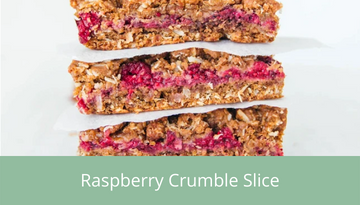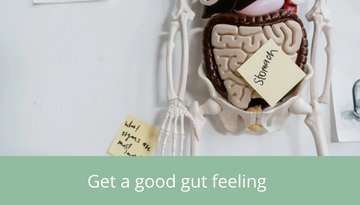
The terms “gluten intolerance”, “wheat intolerance” and “gluten sensitivity” can be quite confusing. This problem arises because there are no widely accepted criteria doctors can use to define these problems. The causes, treatment and medical consequences of these conditions are not as well understood as you might expect, and even following a strict gluten free diet is not necessary the sole solution to these conditions. In contrast coeliac disease has very clear diagnostic criteria and there is good evidence that a strict lifelong gluten free diet is the only treatment to maintain health and avoid long term complications.
In general, gluten intolerance is associated with unpleasant symptoms after eating food containing gluten (whether that be from wheat, rye, barley, or oats). Symptoms may include tummy upset (for instance diarrhoea, bloating or crampy pain) and others such as fatigue, headache, or irritability. People who are wheat intolerant may feel their problems relate specifically to wheat products and no other gluten containing grains such as rye or barley. In practice, it can be difficult to make this distinction. Some doctors use the term gluten sensitivity to describe people with medical symptoms (or conditions) that appear to worsen with gluten in the diet, but the person does not fit all the criteria to make a definite diagnosis of coeliac disease (for instance the coeliac blood test or bowel biopsy is normal). Apart from helping to reduce symptoms, there is minimal evidence that a gluten free diet is beneficial to maintain long term health in this setting, and the decision to be on a gluten free diet needs to be made in consultation with your doctor.
What is coeliac disease?
Coeliac disease (pronounced see-lee-ak) is a permanent intestinal reaction to dietary gluten. With coeliac disease, the cells lining the small bowel (intestine) become damaged and inflamed. This causes flattening of the tiny, finger like projections, called villi, which line the inside of the bowel.
The function of the villi is to break down and absorb nutrients in food. When these villi become flat, the surface area of the bowel is greatly decreased, which interferes with the absorption of nutrients from food. This may also lead to deficiencies in vitamins (such as vitamin D, vitamin B12 or folate) and minerals (e.g., iron and calcium). The resulting intestinal damage can cause malnutrition and conditions such as infertility and osteoporosis. It also potentially can lead to small bowel cancer.
Symptoms of coeliac disease may include some, or all, of the following:
- Weight loss
- Indigestion, abdominal pain, bloating and flatulence. This may be general or associated with digestion of specific foods
- Gastrointestinal changes such as bulky fatty bowel motions, sometimes pale and bad smelling
- Diarrhoea or constipation
- Nausea and vomiting
- Anaemia (usually resulting from iron deficiency)
- Folate and vitamin B12 deficiencies
- Fatigue and generalised weakness
- Muscle cramps due to low calcium levels
- Blistering, itchy, or painful rash - particularly about the knees, elbows, buttocks and back (dermatitis herpetiformis).
Treatment of coeliac disease
Coeliac disease is treated by a life-long gluten-free diet. By specifically removing the cause of the disease, this treatment allows all abnormalities to recover completely, if the diet is adhered to strictly, patients can recover.
However, if you think you may have CD, a gluten-free diet should not be started until you have had a diagnosis. This is because it will interfere with getting a correct diagnosis, giving unreliable answers that can be a false negative. Simply trialling a gluten-free diet and feeling better is not enough for diagnosis – although this may indicate gluten intolerance, it does not highlight the existence of coeliac disease. A proper diagnosis is vital for ensuring you can correctly manage the disease and get your body healthy again.
A coeliac blood test should be used as the initial screening test (“coeliac serology”, the important one being the transglutaminase antibody), and if it is positive the diagnosis must be confirmed by performing a gastroscopy, a procedure that allows tiny samples (biopsies) to be taken from the small bowel which can reveal if gluten is causing damage. A gastroscopy takes about 10 minutes and is done in a hospital or day-procedure centre while the patient is sedated (most people find it very straight-forward). Taking small bowel biopsies is a vital part of diagnosing coeliac disease as the blood test alone is not definitive. If the biopsy reveals small bowel damage consistent with coeliac disease a strict gluten free diet and ongoing medical follow-up is the appropriate treatment. The doctor will perform other tests such as checking your nutrient levels and bone density and advise family screening.
The Gluten-free Diet
When following a gluten free diet, you will invariably spend a lot of time reading food labels. There is a lot of information on packaging such as - nutritional information, ingredient list, advice on allergens, cooking instructions and storage information. There are many foods you can still enjoy on a gluten free diet.
Gluten-free food fall into the following categories:
Naturally, Gluten-free Foods
Many foods are naturally gluten free. These include fresh fruit, vegetables, rice, potato, corn, plain meat (not sausages), fish, eggs, cheese, milk, most yoghurts, pulses (peas, beans, and lentils), fats and oils. There are also many grains that are naturally gluten free, for a full list please refer to our website.
Products Labelled Gluten Free
Products manufactured in New Zealand and Australia, can only be labelled ‘gluten free’ if they contain 'no detectable gluten'. However, there are many imported products which are not labelled under the New Zealand food labelling law.
Products displaying the Crossed Grain logo
These are certified by Coeliac New Zealand, and are independently tested to be safe for people, with coeliac disease and those on a gluten free diet. So, look for products that carry the Crossed Grain Logo when doing your grocery shopping, it provides assurance that a product is safe and will eliminate the need for label reading.
All products that are manufactured in New Zealand and Australia must declare, on the ingredient panel when wheat, rye, barley, or oats is present.
It is also important you look after both your physical and mental wellbeing once diagnosed, and that you are your own advocate, especially when eating out. Always check if they have a dietary requirement and ensure to avoid cross contamination if they have coeliac disease.
If you are concerned your symptoms could be coeliac disease take the free online self-assessment and consider becoming a member of Coeliac New Zealand - so you can support the work we do in your community.
For webinars and other video content see the Coeliac NZ YouTube channel.







